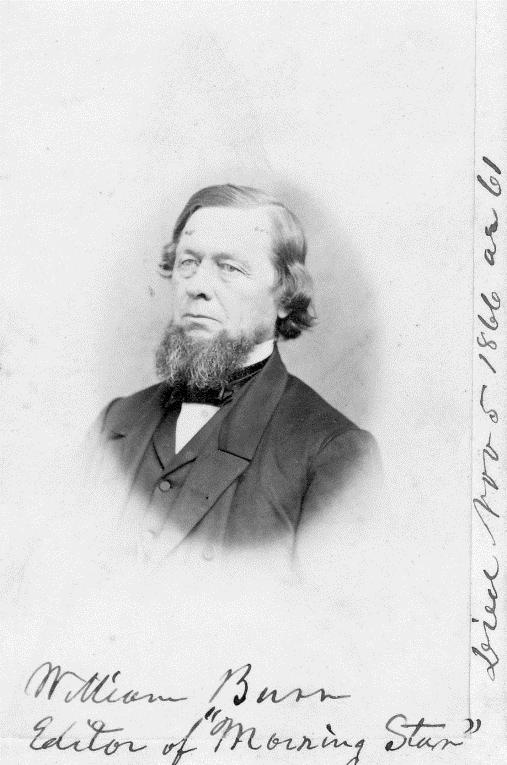Disclaimer
The Dover Public Library website offers public access to a wide range of information, including historical materials that are products of their particular times, and may contain values, language or stereotypes that would now be deemed insensitive, inappropriate or factually inaccurate. However, these records reflect the shared attitudes and values of the community from which they were collected and thus constitute an important social record.
The materials contained in the collection do not represent the opinions of the City of Dover, or the Dover Public Library.
1991 Heritage Walking Tour
Heritage Walking Tour Booklet June 1991 by the Dover Heritage Group, Dover, NH, c. 1991.
In 1978, a group called Dover Tomorrow formed to promote the growth and prosperity of Dover. A subcommittee was tasked with promoting “appreciation of Dover’s heritage”. The Lively City Committee created the first Heritage Walk the next year. It was so popular that new tours were created every year, and held through 2007. By 1982, Dover’s historical society, the Northam Colonists, had taken over the research and creation of the Heritage Walking Tour Booklets. The information on the page below is a transcription of the original Heritage Walking Tour Booklet. The Library has a complete set of the Heritage Walking Tours if you would like to see the original booklets.
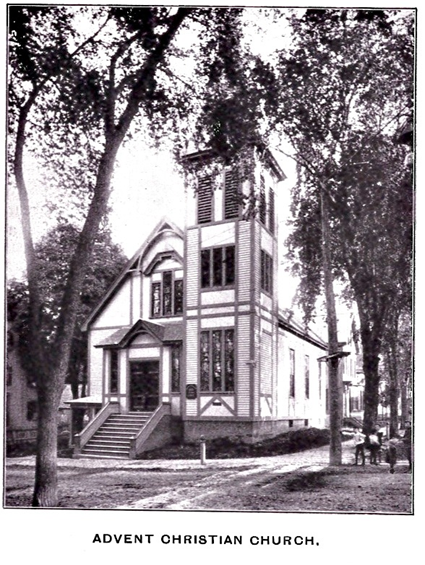 Advent Christian Church 1882—1978
Advent Christian Church 1882—1978
Dover Learning Center 1978
The Atkinson-St. Thomas-Belknap-Washington Street neighborhood, two blocks west of Dover’s Central Square area, developed rapidly beginning just after 1840, due largely to the business and industries that were growing in the prosperous village nearby. As the mills expanded, buoyed by the new craft of calico printing, talented workmen moved to Dover and settled close by their places of employment. Mill overseers and weavers, engravers and designers built homes on these newly-created streets. Mechanics, masons, and construction tradesmen found lots of gainful employ in Dover. And a larger factory population naturally demanded more business, commercial, and personal services: retail establishments began to flourish. Grocers, carriage makers, jewelers, stationers, booksellers, shoe manufacturers, newspapermen, schoolteachers, teamsters, tailors, homeware dealers, and hostellers all settled on these steeply pitched streets.
Yet the history of this area of Dover really began during the 1820s. None of these streets existed then, and most of the land here was fields and orchards owned by the Coffin family who lived atop Log hill (now 49 Arch St.) Over the family’s objections, the townspeople petitioned to have a new road put through from the Tole End to Central Square and after a six-year court battle, Washington Street was cut through. The land abutting the Coffin fields was owned by William King Atkinson who lived at the corner of Central Street and St. Thomas.
William King Atkinson (1765—1820) was a Harvard educated lawyer who became president of the Strafford Bank 1830—1812, a charter organizer of the Dover Cotton Factory in 1812, an incorporator of the Franklin Academy in 1818, Register of Probate for Strafford County, and Attorney general of new Hampshire 1807—1812. When President James Monroe visited Dover in 1817, Judge Atkinson delivered the welcoming address. Yet he was also a delinquent debtor to the Strafford Bank and after his death on September 29, 1820, the bank attached a lien against the estate of his widow Abigail. It was found that he had owned 25 different parcels of land valued at 471, 321, including 16,000 acres in Atkinson and North Charleston, Maine. (In fact, Atkinson, Me. was named for him.)
After Abigail Atkinson’s death in 1838, their huge homestead parcel was partitioned into house lots and sold to satisfy the Strafford Bank’s claim against one-third of her estate. New roads were established and the majority of the lots lining the new streets were purchased by three wealthy Dover speculators: Asa Freeman, an attorney who had married Atkinson’s daughter, Frances, John Tredick, proprietor of a grain, corn, and flour store at Lafayette Square, and Elijah Wadleigh, co-publisher of the “Dover Enquirer” and bookstore owner. Almost all the properties on present-day Atkinson, Belknap (originally called Hamilton St.), St. Thomas, and Washington Street (from the railroad tracks to Fayette St.) can be traced to these gentlemen’s 1841 block purchase.
In order to get a flavor of the origins of this neighborhood, it is most appropriate to quote the descriptions of lifelong resident John B. Stevens (b. 1836), author of an historical paper entitled, “The Evolution of Washington Street,” which colorfully depicts the earliest days of this area of Dover.
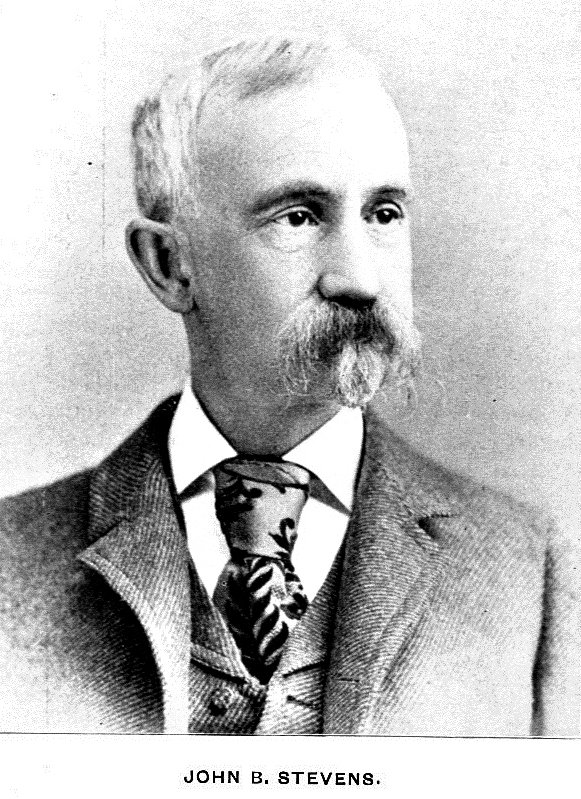
“Each fall seaweed was packed around about cellar walls, to keep the cold out... Leathern fire buckets hung in the hall-ways. No sound man was without occupation. Mill work was the main industry, and it fixed habits, tastes, ruling views and social patterns. Thrifty men soon owned houses…There nature. Genealogy was not cultivated. Door-step calls began with sun-up. In this way news was transmitted from mouth to mouth, receiving embellishment that made it as sensational as any items in your evening paper. There was not much silver and mahogany. Equality was social, as well as political. Juvenile literature there was none. Not an emigrant lived on the street. No one occupied an entire house... When the 9 o’clock bell, on the factory, sounded the walks and road ways were deserted… Building went on constantly and the sound of hammer and saw was heard from sun-rise till sun-set. But every completed house offered an unchanging call for alteration or enlargement, for children were plentiful and visitors often remained overnight.”
“Amusements were far and few between, so people went to bed early… Hospitality and natural sympathy stood at a high level. Even so late as my boyhood the forest closed in where now stand long rows of dwellings…there were hemlock, pine, and spruce. Coffin’s brook, full to the brim, chuckled to the river lowlands. In its shallows and pools minnows and trout lurked. The partridge drummed and its wild pigeons swept over the locality in flocks.”
“I still cherish early memories, keeping clear and distinct the “Hollow,” the spring, the school-yard and the play-grounds, the clamor of children, the fights in the orchard, the winding of travelled parts of the street, and where they shrank, and where they broadened. Nor do I forget the weary market horses on the square. Stamping at flies and nudging at nose-bags; the great herds of cattle driven past…; the fragrant hay-carts; the crafty wood-traders and the thrifty wood-buyers. The nearest store was dark and cluttered. The carders, spinners, weavers and dressers poured out of the factory when night fell, --tired, hungry and irritable after thirteen hours of labor. The fish peddler cried his catch on Friday mornings, and the lobster man sold from his wheelbarrow every other afternoon, and the horse-radish woman called once a week.”
“About 1846, which was before Dover traders began to carry out goods to customers, Asa Holt operated a push-cart in summer and a sled in winter, to deliver his groceries to housekeepers. Next, Bishop put a high-wheeled express wagon on the road. It was the first of its kind in Dover. His next move was to announce that he would deliver anything from a jug of molasses to a barrel of flour, for ten cents. Holt had charged nine pence.”
“Asa Holt had a boat-yard near the sheep-pasture. The day hire of his boats was too much for me to pay, but many a moon-lit night Joe and I appropriated a slender canoe, and stole into the upper reaches of the river. Despite private and public neglect, general healthfulness prevailed, and the extreme of human life was reached as often then as now. It was noisy locality during vacation time, but when the children had clattered off to school the streets lapsed into comparative emptiness and silence.”
“I want to tell you something about the small boy-hood feeling of my time for all the land and water in this locality. Then this simple story will end in the spun-out, lazy vacation days we affected in the woods, the river and the brooks. Sometimes we wandered down to the Landing to an old wharf with its tumble-down warehouses, but more frequently we remained near home, and fished, bathed, boated, voyaged on Arlo Flagg’s sand-barge, and read in the Hollow, under the great beech tree and along the shaded river bank, battered and broken books that engaged out childhood…’
St. Thomas Street
Named for the first St. Thomas Episcopal Church which was built in 1840 on the site of the present City Hall, St. Thomas Street was developed that same year upon the former property of the late William King Atkinson.
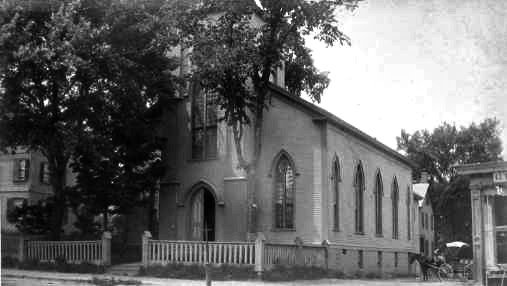
By the beginning of the next decade, over one dozen homes had been constructed on St. Thomas Street. Many of these are now gone: razed in the 20th century for the construction of Dover High School (now Dover Junior High) and the telephone company buildings.
In early 1903, looking to secure a new site for a new High School, the City of Dover began condemnation proceedings on three properties just west of the intersections of St. Thomas and Walnut Streets. On April 20, 1903 the city paid $3000 for a house owned by Cocheco Print works superintendent Washington Anderton, $3000 to carriage-manufacturer Henry Worthen for his former home, and $900 for the Mercy M. Mann property, all located on what now Junior High lawn and school building.
In addition to these three properties, the city also obtained the Eliza A. Lord, Adams, and William Smith estates, all located east of the St. Thomas/ Walnut intersection. The rest of the land for the new school was obtained from the trustees of Franklin Academy for the sum of $1.00. This brought the total outlay for land to $18,255. Construction costs added another $83,473. It was designed by Alvah T. Ramsdell (also the architect of the Dover Children’s Home and the Wentworth Home for the Aged) who was paid $2910. Actual work on the school began on May 9, 1904 and the building was turned over to the School Committee on September 16, 1905.
Even though the school was now in use, the Mann house still stood at the northwest corner of school property in 1905. The school committee of that time talked of putting in a playground at the rear of the high school but postponed these plans “until such time as the Mann house can be removed…” there was also a 2 ½-story tenement house standing between the new school and the Advent Christian church in 1905: this was the home of Lavonia M. Barden.
In 1928, the first addition (the middle section today) was added to the High School. It was designed by J. Edward Richardson (also Dover City Hall architect) and cost $232,000. In 1967, Dover High students moved to a new school on the Durham Road and this building became the Junior High.
The two duplex homes across from DJHS (#33-35 & #39-41) both date from before 1851. Both have had many owners, most of them absentee landlords who rented the apartments to working class families who labored in downtown Dover.
The homes bordering the east side of Atkinson Street between Washington and St. Thomas (across from the NET bldg.) include #6-8, #10-12, and #16-18. The #6-8 duplex was constructed ca. 1888 by Herman Canney who operated a livery stable at 17-23 St. Thomas Street. Canney had owned the lot since 1860. He sold the house in 1898 to Reynolds family who owned it until 1964. #10-12 Atkinson Street was built before 1848 by Isaac badger brown, a house carpenter. Isaac’s son George, became an architect and was the designer of the nearby Advent Christian Church. The home remained with Brown family descendants until 1963. The house on the northeast corner of Atkinson and St. Thomas (#16-18) also dates from around 1850. By the 1860s it was shared by Ira S. Moody, carriage manufacturer, and George W. Young, U.S. Army. The home at #14 was originally a long, narrow shed belonging to the Moody/Young property. These two families owned the duplex at least until the turn of the century.
Advent Christian Church/ Dover Adult Learning Center
“A meeting of believers in the second coming of Christ in 1843 is Holden weekly at the Free will Baptist and Methodist houses for prayer and exhortation.”
This invitation espoused the doctrines of Millerism, founded by preacher William Miller. Miller’s visit to Dover in 1842 caused great excitement “… at fever heat, people giving up their business and even neglecting to gather their crops and some went as far as to make and don ascension robes.” But the year 1843 passed into history as all other years had for centuries. The prediction was not fulfilled, but the movement continued.
In 1845 there was a second, less frenzied, appeal. Believers in Millerism met in halls and private homes in Dover until 1881 when this lot at the corner of St. Thomas and Atkinson Streets was purchased from Lavina Barden. This wooden church, 36 X 48 feet, was designed by George Brown (resident of #10 Atkinson St.) and built for $5000. It was dedicated on April 16, 1882 and was originally called the Second Advent Church.
Adventists of later years did not fix a precise date of the Second Coming, but preached that it is sure to come and all should be prepared for it. Parish members numbered about 100 people with 80 children enrolled in Sunday school. By 1900, the church was known by its present name and in 1978, a new Advent Christian Church was built on Sixth Street and the property here was sold to the City of Dover for new home of the Dover Adult Learning Center.
Atkinson Street
This street first appears in 1840, named for William King Atkinson on whose former property it ran. House lots were sold here beginning in 1841 and ten years later some eighteen residences were constructed from Nelson Street to Washington. By 1847, an elementary school served the neighborhood: the St. Thomas Street Primary School was located midway between Atkinson and Belknap Streets and was used until after 1880. The residents of this area included all sorts of working-class families: some small business owners, tradesmen, mill craftsmen, and, because the homes were large, a great number of boarders, usually persons employed at the Cocheco Manufacturing Company or Print Works.
23 Atkinson / 54 St. Thomas Street
Built around 1850, this home was constructed for Horace Littlefield (1818-1898), a tinsmith from Wells, Maine. Littlefield became the proprietor of Littlefield, Frary Co., a stove and hardware shop in the Cocheco Block. The house was inherited by Littlefield’s daughter, Fanny B. Tripp (1856—1929) and later by his granddaughter Mrs. Willis (Grace T.) Hayden. Hayden’s Dairy was popular milk bottling company in Dover from the late 1920s through the mid-40s. Many Dover residents can still recall the smell of hot milk that permeated the neighborhood and the noisy rattling of the glass bottles. The dairy also sold wholesale orange drink and ice cream. A lovely garden existed behind the house, tended by another well-known resident, public school music teacher Miss Minnie Eaton.
27-29, 26, 31, 30-32 Atkinson Street
These houses all pre-date 1851: #26, originally owned by Frank Freeman, proprietor of the famous Central Square Oyster House; #27-29, by Alexander Frazier, a merchant tailor, and Oramel C. Ingraham, a shoemaker; #31, built in 1846 by Royal R. Burnham, a brick mason considered the best shot in Dover. (His 1902 obituary noted that Burnham was ruled out of most competitions because others would not enter if it were known he was a contestant!); and #30-32, originally owned by Luther C. Kimball, one-time owner of the American House and co-founder of the Kimball Hotel. (This house remained with Kimball heirs until 1961.)
35 Atkinson Street
Built ca. 1870, this home presently owned by Thom and Mira Hindle, was the residence of Joseph S. Abbott (1831-1901), one of Dover’s wealthiest citizens. Abbott began a venture-teaming business in 1856, an ice company in 1860, and later became a supplier of hay, bedding and granite. Abbott cut over 8000 tons of ice per year from the Upper Cocheco and owned a fine granite quarry in Durham. He was responsible for the stone work for the #1 Cocheco mill (Clarostat), the Sawyer Woolen Mills, and the Masonic Temple. Abbott was City Marshall 1869-72, chief engineer of the Fire Company 1886-87, and driver of steam engine #4 at the Orchard St. Station (firehouse 1 restaurant). This engine was later renamed the ‘Joseph S. Abbott.’ He also served in the Strafford guards and served at Fort Constitution during the Civil war. His son, Samuel, who lived at #43, continued operating the Dover Ice Company here until his death in 1912. Samuel’s daughter, Gertrude Abbott Hanson lived here until she died in 1972. The property was left to the First Parish Church after the death of her husband Arthur Hanson and was purchased by the current owners.
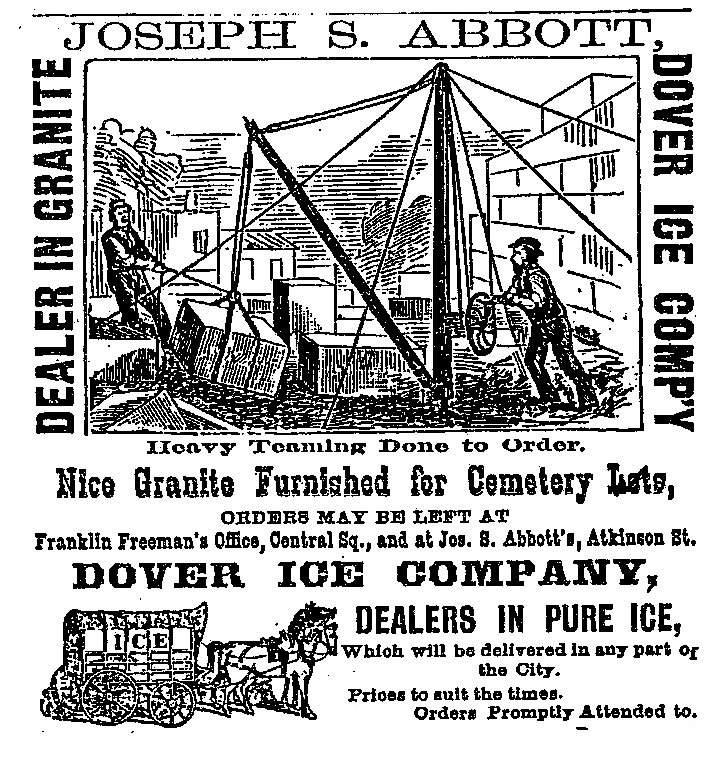
34-36 Atkinson Street
This double house, built ca. 1850, had two owners for most of its existence. The front half (#34) was owned originally by Alfred Caverly and by the late 1870s was acquired by Thomas C. Coleman (1826-1906), a renowned sea captain from Dover. Coleman learned the seafaring life at age eight, ‘his father being a sailor on the Dover shipping between here and Portsmouth and along the coast when Dover was once of the greatest shipping ports for all the country north of here.” Young Coleman soon commanded his own packets and schooners along the New England coast. The 79-foot schooner ‘G.W. Raitt” was one of his early vessels. It was used for general freighting business as it could carry a heavy cargo on a very light draft of water--- a good ship for the shallow Cochecho River! In 1895, Coleman’s next schooner “Lilly” sank in Boston harbor with 50,000 bricks aboard. The vessel was struck by a fishing boat and sank in under three minutes. The 69-year-old captain Coleman and his for man crew escaped in a small boat and rowed 8 ½ miles to Boston. This was Coleman’s first accident in over 40 years of service. He retired from the sea at age 72 and devoted his landlocked life to study of poetry and astronomy.
40, 41, 42, 43-45 Atkinson Street
These four similarly styled residences all date from the 1850—1870 period. #40 was built ca. 1855 for Jonathan H. Winslow, dealer in hats, caps, furs, boots and shoes. It remained in the Winslow family until 1921. #42, owned for nearly forty years by present owner Edgar Hall, dates from around 1860. It was owned for many years (1878—1912) by the George H. Patterson family and later by the Avery’s (1918—1953). #41, originally owned by Clarissa Kimball Davis (ca. 1870 was sold in 1879 for $2100. Later in 1909 it was purchased by the Annie M. Grover family and heirs Grover and Susan Tasker owned it until 1984. #43-45 has been owned since 1949 by Mohammad David. This ca. 1850 home was built by Hammon Hutchinson, originally a spinner in the mill and later owner of a confectionery shop. Two daughters, Emily and Matilda, became teachers, with Emily eventually being promoted to Assistant Principal at the High School. A later owner was Samuel Abbott, son of Major Joseph Abbott.
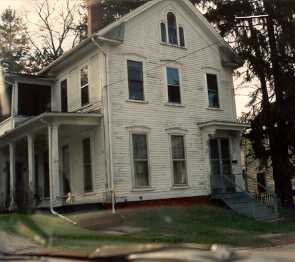
43 Atkinson Street
46-48 Atkinson Street
In 1846, William Edgerly purchased this lot from Tredick and Wadleigh. By 1854 this home was built and the property sold to William Johnson. In 1859, jeweler Charles Bacon bought the house for $2100. Bacon had opened his store at 388 Central Avenue in 1857 and advertised “the most attractive establishment of this kind in Dover…engraving neatly executed…intricate jobs performed satisfactorily in a thoroughly workmanlike manner at exceedingly moderate prices.” Bacon sold this house in 1888 to Elisha Rhodes Brown and there have been only three owners since that time.
46 Atkinson Street
50 Atkinson Street
The lot here sold in 1876 for $600; in 1888 the land and buildings were purchased for $4200 by Freeman N. Davis (1850-1934). In the Dover city directories of his era, Davis is variously referred to as a real estate “dealer”, “collector” and a janitor, and according to local hearsay, was regarded as quite a character. Davis owned rental properties all over town, but this was his home. At the time of his death in 1934 he was one of Dover’s largest taxpayers: his holdings valued at over $93,000. Davis owned an additional $82,000 in stocks and bonds, all of which were left to his widow, Nina Jane. When Mrs. Davis died in 1941, this house was left to the City of Dover and a large portion of her estate was responsible for funding the construction of the Davis Vocational School on Main Street. Later owners of this home included the Demopoulos and Georgakilas families, and current owners are John and Annette Horn.
51 Atkinson Street
Built between 1844 and 1851 by trader Warren Hanscom, this residence was owned for many years by the James A. Richardson family. Richardson was a commission merchant in town from 1850s to his death in 1873. Since 1889, when Richardson’s widow Harriet died, the house has had ten owners and is presently owned by Brian Gottlob.
53-55 Atkinson Street
The land for this property was given by Benjamin F. Guppy (resident of adjacent 63 Atkinson St.) to his daughter Emily and her husband King Colbath, a grocer and musician, in 1860. The Colbaths lived here from at least 1865 until 1901 when the house was sold to Frank P. Coleman. The current owner resides in Madbury.
56 Atkinson Street
This home was built between 1871 and 1880 on land originally part of the John Butler property next door at #58. William Foss, an engineer, lived here in 1880 and from the 1890s through 1941 the house was occupied by salesman William Reed. In the 1940s, Fred H. and Helen M. Potter lived here and in 1979 Helen and Ruby Potter sold to the current owner Thomas Leavitt.
58 Atkinson Street
In 1847, John Butler (1819—1911), a native of England who immigrated to Dover to work in the Cocheco Mills, bought this land from Andrew Peirce for $280. The house was built before 1851 and the property also contained the lots now #50 and #56. Butler became a master of weaving and at age 22 became an overseer at the Cocheco Manufacturing Company. He held this position for 48 years, retiring at age 70. He was the last survivor of the Harrison Veterans Club, an organization of those men who had voted for William Henry Harrison for president in 1840. At the time of his death in 1911, John Butler was the oldest cotton waver in America, dating his service from about 1833.

John Butler
63 Atkinson Street
Currently owned by the Rochette family since the 1950s, this house’s former occupant from the 1920s to the 50s were Harry W. and Mabel J. Clark. Harry Clark was employed at the C.A. Pierce company at 39 Locust Street, purveyors of meat, fish, and canned goods. It was built before 1851 by Benjamin F. Guppy and by the 1870s was owned by farmer John Hayes. Mrs. Hayes lived here in 1892.
Belknap Street
Belknap Street was also laid out ca. 1840, but the original name assigned to it was Hamilton Street. By 1856 it had changed to Belknap, no doubt in honor of Dr. Jeremy Belknap, for whom the new elementary school at the corner of Belknap and Silver had been named. However, Belknap Street at first only ran from Washington Street south to Nelson Street: it did not extend all the way to Silver until the school- house was constructed. The lots here were not divided into house-sized parcels as they were on Atkinson Street, but cut into four very large properties. As a result, this street developed more slowly than did Atkinson and most homes here date from 1865—1895.
In 1865, the Honorable Jeremiah Smith, associate justice of the Supreme Judicial Court (1867-1874), bought the property just north of the Belknap School on the west side of Belknap Street, and another piece of land on the opposite side of Belknap just north of Nelson from Abraham Folsom. He built his homestead here (#59-61) the next year.
Later, in 1887, Smith bought three additional lots adjoining his property on the north from Daniel Littlefield, Sidney W. Towle, and Eleazer C. Hayes. In 1890 Smith subdivided the property on the west side to form eight lots where there had formerly only been five. He divided his east side Belknap Street property into three lots A, B, and C. The west side lots are now #59-61 (Smith’s own home: lots 1 & 2), #55, #51-53, #39-41, #35-37, #31-33, and #27-29 Belknap Street. Each of these lots ran back to the property of the Portsmouth & Dover Railroad which had opened in 1874 with nine stations in Dover, one nearby on Folsom Street. The railroad tracks ran parallel with Belknap and Cushing Streets and continued on to Sawyer Mills, Dover Point, and the Piscataqua River bridge to Newington.
62 Belknap Street
Dating form around 1860-1870, this home’s original occupant was probably J.D. Hanson. Harry Hanson acquired the property from his father James V. Hanson, a carpenter who had bought it in 1895 from Marilla M.H. Hills. Fred C. Smalley bought the house from Harry Hanson in 1904, and after his death in 1942 Fred’s son Frederick lived here until he died in 1959. At that time, H. Robert Smalley became the owner. It was purchased from Smalley in 1974 by the present owners, the Barton family.
60 Belknap Street
In 1897 George A. Murry bought Lot B on the east side of Belknap from Jeremiah Smith (who still owned lots A & C). A year later, Murry bought the southerly half of Lot A and the home here was constructed. Murry heirs sold to John D. Grady in 1828. At that time Grady was a foreman with the Parle Ice Company. He later became the owner and, by 1958, Grady was the proprietor of the Parle Coal and Oil Company. The house now contains three apartments.
59-61 Belknap Street
Presently owned by Doris Smalley, this Victorian-looking home has seen many additions and renovations, but the original structure probably dates from 1866-1870 when it was the Jeremiah Smith Homestead. Fred C. Smalley and Sons Co. bought the property in 1935 from Albia R. St. Lawrence who had owned it since 1927. Previous owner was Rufus Belyea who had acquired the house from Ellen H. and Clara C. Hayes, trustees under the will of Charles W. Hayes in 1924. Hayes had purchased the homestead in 1898 from Judge Smith.
55 Belknap Street
This home was moved to this location ca. 1928. First occupant was Dover manufacturer and esteemed philanthropist S. Judson Dunaway (1890-1976). Dunaway was the president of Expello Corporation, producers of a potent moth-killer, and inventor of Vanish toilet bowl cleaner. The Dunaway family moved to Dover from New York City and lived here from 1928 until 1935 when they moved to Silver Street. Daughter Helen, a 5th grader in Miss Smart’s Belknap School class, is particularly remembered for setting the fashion tone for little girls in Dover; her large hair bows sparked a rash of young imitators. Later, in 1950, this was the home of Robert L. Price, Dover’s first city manager.
50-52 Belknap Street
In 1868, Hiram Wentworth purchased the lot here from Orlando Young for $650. John C. Tasker bought the land and the buildings in 1869.Tasker was owner of a Washington Street grocery store and lived here through at least 1909.
42-44, 38-40 Belknap Street
This pair of duplexes was built ca. 1879 on land bought from Jeremiah Smith by William Wentworth. Wentworth, an ornamental painter with a business on Washington Street, made his home in #42-44 and rented #38-40. In 1888, Wentworth moved to a farm in Gonic and #38-40 was sold to Albert Stackpole who shared the duplex with his brother George. The Stackpoles, worked in a Dover shoe factory lived her into the 1910s.
31-33, 35-37, 39-41 Belknap Street
These are some of the few Dover examples of the ‘triple decker’ type of tenement so prevalent in the Boston suburbs at the turn of the century. These three buildings, containing 18 apartments, were erected by Valentine Mathes ca. 1900. They were built on land purchased from the Smith estate in 1898 with the stipulation that no building less than two stories tall could be built. These three-deckers easily met that requirement and served as investment properties for the Mathes family. Valentine Mathes was a wealthy merchant with a home on Cushing Street. He operated a store on nearby Folsom Street that sold coal, grain, hay, and fertilizer. Later the business evolved into a lumberyard and Mathes opened a grocery store on Washington Street. When he died in 1915, he willed the three tenements to his daughter Margaret.
In the early 20th century, these building were home to workers in various local industries including the Pacific Mills, United Printing Machine, I.B. Williams, and later the Portsmouth Naval Shipyard. Other residents included store clerks, firemen, bakers, and the janitor at the public library.
34 Belknap Street
The lower end of Belknap Street developed during the 1870s, due in part to the construction of the Folsom St. Station of the Portsmouth & Dover Railroad. This led to the initiation of several new businesses on the newly formed Folsom Street which was laid out in 1870. Much of the land here had been owned by the Folsom family since the 1840s. In the late 1860s, the Folsoms began selling their land: a number of lots were purchased by Orlando Young who eventually came to own all the land on the east side of the street north of #34 and some on the west side as well.
In 1869, Young sold this lot to Israel P. Church of Madbury. About six years later carpenter Church erected #34 Belknap which was his home for several years. He probably built #36 as well, as the two houses are nearly identical.
25, 27-29 Belknap Street
These two homes were built in the 1890s on land originally part of the Jeremiah Smith estate. By 1898, #25 was occupied by George Mathes and his sons Benjamin and Charles, all whom worked as clerks downtown. In the 1910s and 20s it was home to Alphonse Gilbert who worked for D. Foss and Sons lumberyard and door, sash, and blind factory on Portland Avenue. His widow Mary lived here into the 1940s.
23 Belknap Street
Carpenter Charles Ham may have constructed this residence for himself between 1871 and 1874. Ham later had a grocery store, Cater & Ham, in Ham’s Block. By 1888, shortly before his death, Ham later moved to Silver Street.
26-28 Belknap Street
This lot, like those around it, was bought from the Folsom family by Orlando Young in the late 1860s. The house was built in 1870 and was home to Israel Ham until 1890. It was then owned as rental property by the widow Jennie Freedman.
20-22 Belknap Street
Orlando Young had this duplex built ca. 1869. He moved here from Atkinson Street and lived here through the 1880s. Young was apparently a policeman with a penchant for real estate. He owned the two houses north of this one as rental properties. Mrs. Young was a dressmaker with a shop on Washington Street. She had moved elsewhere by the time of Orlando Young’s death in 1895. In the 1910s, #20 was home to John and Mary Mathes. He was a printer at Foster’s and she was a housekeeper. York’s Lumberyard Garage, specializing in truck repair, was located behind #20. In the 1930s, head mechanic George Twombly lived at #22.
16-18 Belknap Street
This house is perhaps best known as the site of the February, 1988 murder of Mrs. Stacia K. Reilly, age 79, by two Dover teenagers attempting a robbery. Mrs. Reilly had operated a small neighborhood grocery store here for just over 52 years. Thomas and Stacia Reilly had lived on one side and ran the store on the other side of this duplex. One year after the homicide, two of the teenager offenders were sentenced to fifty years to life in state prison. A third teen, who acted as a lookout for the robbery, was also sentenced to a lengthy jail term.
10-12 Belknap Street
This three-family residence was constructed ca. 1869 on land bought by Orlando You from William Paul. It has always served as rental property.
Folsom Street
The Folsom Street area is one that has changed considerably in the last century. From a bustling commercial center with a railroad station, it has evolved into a lower income residential area, often troubled by crime.
An early industry here was begun by the Folsom family. Brothers Abraham (1805-1886) and Josiah (1815-1889) Folsom had a store on Main Street during the 1830s and 40s where they sold West India goods, paints, oils and furniture. Around 1850, Abraham and his son Simeon started an oilcloth carpet manufacturing company in a large building on the west side of Belknap Street across from the end of St. Thomas Street. By1859, at least 17 people were employed at the carpet factory, turning out about 1000 yards daily. In 1868, Simeon died at the age of 34 and the business moved to Locust Street under the name of J.B. Folsom and Company, indicating that Josiah took it over from Abraham. It continued at that location until the 1870s.
Perhaps the advent of the railroad line form Portsmouth to Dover had an effect on this relocation. In any event, Folsom Street was established about 1870 and the railroad tracks were laid from 1872-1873 at the street’s west end. A passenger station was completed in 1874 and this area was quite a busy place when the trains went through.
Then around 1882, Valentine Mathes started a grocery store in this neighborhood and soon expanded to a business in coal, hay, grain, and fertilizer. After the turn of the century V. Mathes and Son sold out to Edwin J. York who ran the business until the 1940s when Diamond Match Company took over selling lumber and building materials until about 1958.The buildings involved with his business were on the south side of Folsom Street and are now torn down.
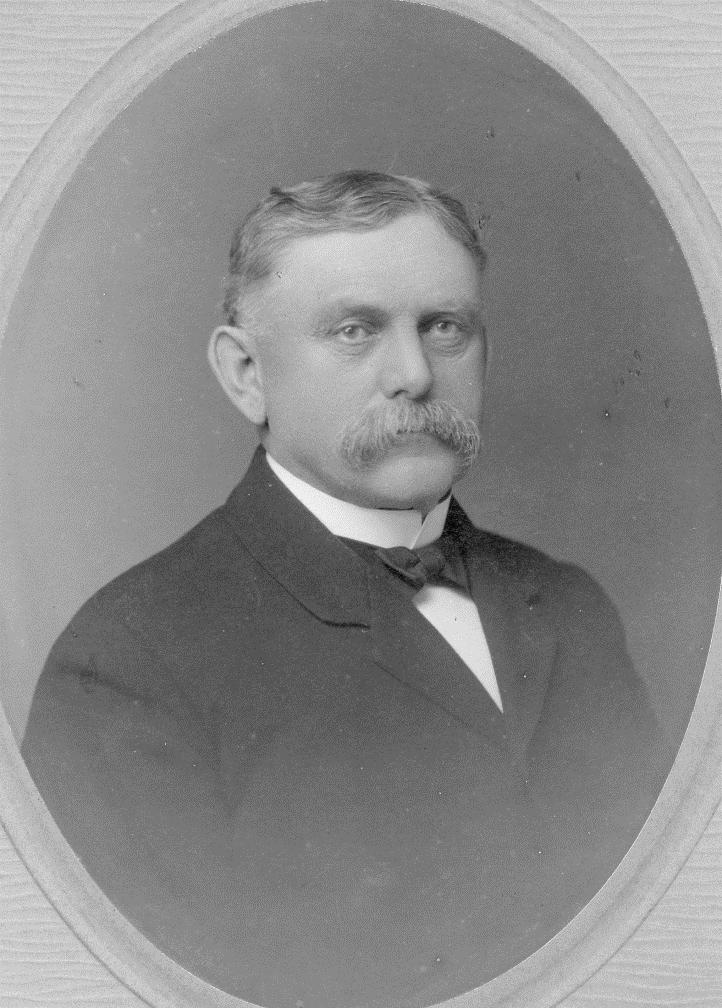
Valentine Mathes
The property on the north side of Folsom Street and along Belknap Street up to #9-11 came into the possession of Gerald Scarr in 1902. Scarr was a plumber, tinsmith, and roofer and lived at #11 Belknap. He ran his business from his home. His widow Olive (second wife) lived there until ca. 1964.
The house on the northwest corner of Folsom and Belknap Streets (#19-21) looks new, and it is. The original house went through a disastrous fire a few years ago. The building was then stripped down to its structural walls and rebuilt almost 100%.
6-8 Belknap Street/ 63-67 St. Thomas Street
Built ca. 1859, this large apartment house was first owned by the John Cater family, then in 1865 by Comfort Hayes and soon after, by the Ham family. John S.F. and Ann S. Hayes Ham lived here from 1869 to 1892. In his will, filed in 1909, carpenter and cabinet-maker John Ham left $1000 to the Washington St. Free Will Baptist Church for the purchase of a bell, and another $1000 to St. Johns Church. He also willed $5000 to Boston University to pay off his 1903 pledge to them. Since the 20th century, there have been eight different owners.
Washington Street
Most of the original properties that existed on Washington Street between Belknap and Walnut Streets have long since disappeared. This wa, however, quite a lively area beginning in the 1840s. At least six residences, occupied by shoemakers, mill machinists, weavers, and beltmakers, existed here along with a large block of stress and tenements known as Laskey’s Block. In later years, there was a grocery store on the ground floor of that building. Walter N. Gray was the proprietor of Gray’s Branch Grocery here and Thomas W. Webb was a clerk in the store. Mr. Webb took over by 1917 and Webb’s Corner Grocery was here until the family sold the whole block to the New England Telephone Company in 1957. The buildings were torn down and the present Telephone Company Building was built in easy stages.
Deacon Lewis Miles of the Dover Baptist Church was the butcher in Webb’s grocery for a number of years. If anyone wanted to go in the church during the week, they had to see Deacon Miles who was the keeper of the keys!
One other large house, at the corner of Washington and Atkinson, was Stephen Toppan’s, a well-known cabinet maker. Toppan “hung door-bells, made cunning cupboards, secret hiding places for valuables, coasting sleds, chairs, tables, bedsteads, and coffins. The neighborhood knew him as one sudden and quick in quarrel.” The Toppan family lived here until the mid-1880s.
188 Washington Street
Probably the most notable resident at this address was William Burr.
He bought the land here in 1844 for $475 from Tredick and Wadleigh and the home was built by 1846. After he died in 1866 his widow Frances lived here until her death in 1895. William Burr came to Dover in 1833, bringing with him a printer for a newspaper called “The Morning Star,” the organ of the Free Will Baptist Printing Establishment. They originally settled near Franklin Square, and in 1843 moved the printer to Washington Street, building a two-story structure which evolved eventually into the Odd Fellows Building (now gone). For more than thirty years, Editor Burr was agent of the printer, and was also one of the co-founders of the Washington St. Free Will Baptist Church (1840). He served as the church’s first deacon, and for 25 years was the treasurer of the Free Will Baptist Benevolent Society. He was also a member of Dover city government and the New Hampshire legislature. He retained the high esteem of all who knew him. John Stevens wrote, “only three men have left lasting impress on Dover. They came here in their prime, during the first half of the last century. John Williams started the cotton industry, John P. Hale aroused the moral sense of the community as no minister of the gospel had ever succeeded in doing. William Burr brought a religious journal, already seasoned and authoritative. The last named did not possess the marrow of Williams or the mental burliness of Hale, but in gristle, and binding, and drawing together force, he was inferior to neither of his contemporaries.”
184-186 Washington Street
Built before 1846, this home belonged to bookstore owner and land entrepreneur Elijah Wadleigh. He sold the property in 1849 to Alpheus Rogers. In 1867, Rogers sold to John S. Glass, a carpenter who made substantial alterations and additions to the structure. By 1892 John Glass was City Assessor and was married to Sarah Ham Glass, daughter of Daniel Ham of 197 Washington Street and sister to John S.F. Ham next door at 6-8 Belknap. Sarah Glass’s niece’s husband, James F. Gallagher, inherited the house after 1900 and sold it to John S.F. Ham. Ham resold the house in 1908 to the Lord family who owned it until 1970. Present owner is Dr. Ronald Henderson who maintains his dentistry practice here.
151 Washington Street/ Dover Baptist Church
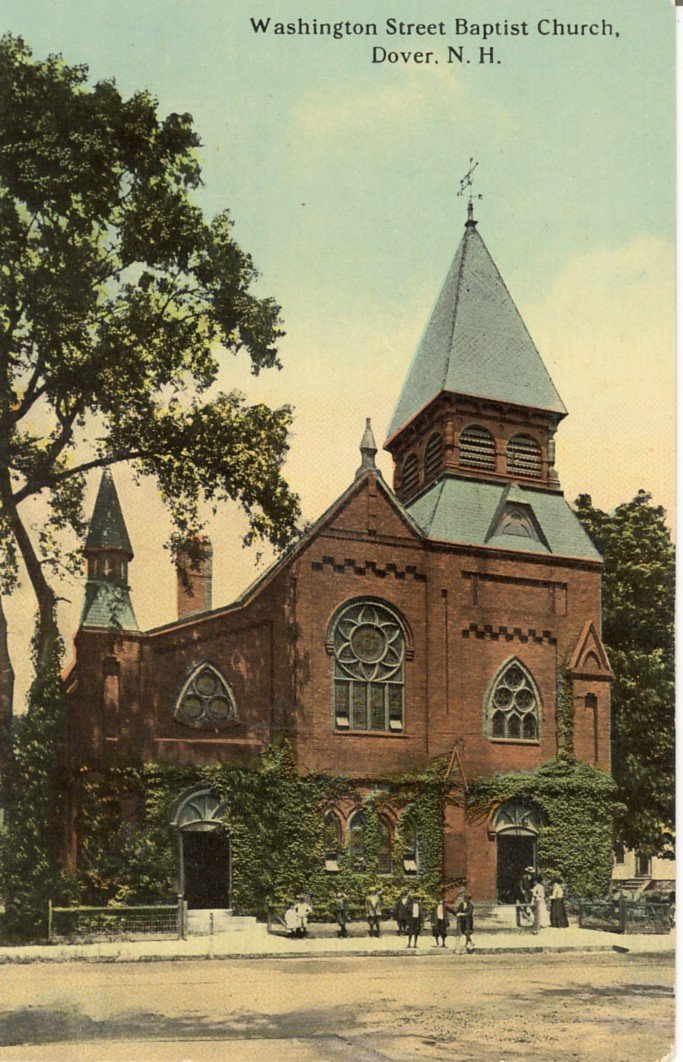
The original Washington Street Free Will Baptists had their church further down on Washington Street in a building which became known as the Odd Fellows Building. In 1868, they bought the lot here on the corner of Washington and Fayette Streets from Almanzor Towle for $4000. The lot had a house/tavern on it and that was moved to Belknap Street. The Baptists built a new brick church here for $20,000. In 1882, fire gutted the structure and the church was rebuilt the next year as it exists today. The sketch shows the church as it appeared before the fire. The Sunday school addition on the west side of the naming building was built in 1950 on property purchased from the Stevens estate in 1928. It was on this site that John B. Williams lived: the man of literary talent who has been quoted several times in this brochure. Mr. Stevens was Dover’s City Clerk for 30 years, a trustee of the Dover Public Library, prominent on the Dover School Boards and on the Water Board, and was a member of several other civic and fraternal organizations as well as a member of the New Hampshire legislature. Stevens died March 1, 1927.
Over the years, the church has been able to purchase the entire block here: the last portion acquired was the 2-story white dwelling next door at #163. Church completely renovated the house and it is used by missionary families home on furlough. The house has an interesting history: it is believed it was originally built at the Upper Factory village (Williamsville) and moved to this site in 1842 by James Horne who moved to town to work in the cotton mills. The Hornes raised a fine family here: son George led his class at Dartmouth, son James Metcalf became a distinguished teacher, and daughter Achsah “sang like a nightingale” and became a music teacher. James M. Horne sold to Edmund Swan in 1864 and the house sold at least five more times before the church bought it from the McDonough estate in 1981.
26 Walnut Street
This Victorian-style home was probably built around the turn of the century. In the 1890s, the land here was owned by Dr. Levi Hill who lived nearby in a brick house on Washington Street. In 1908, Arabella Vickery sold the homestead to Samuel Abbott of Atkinson Street. In 1912, Abbott conveyed the property to Valentine Mathes. The Pollard family owned the house from 1923-1990.
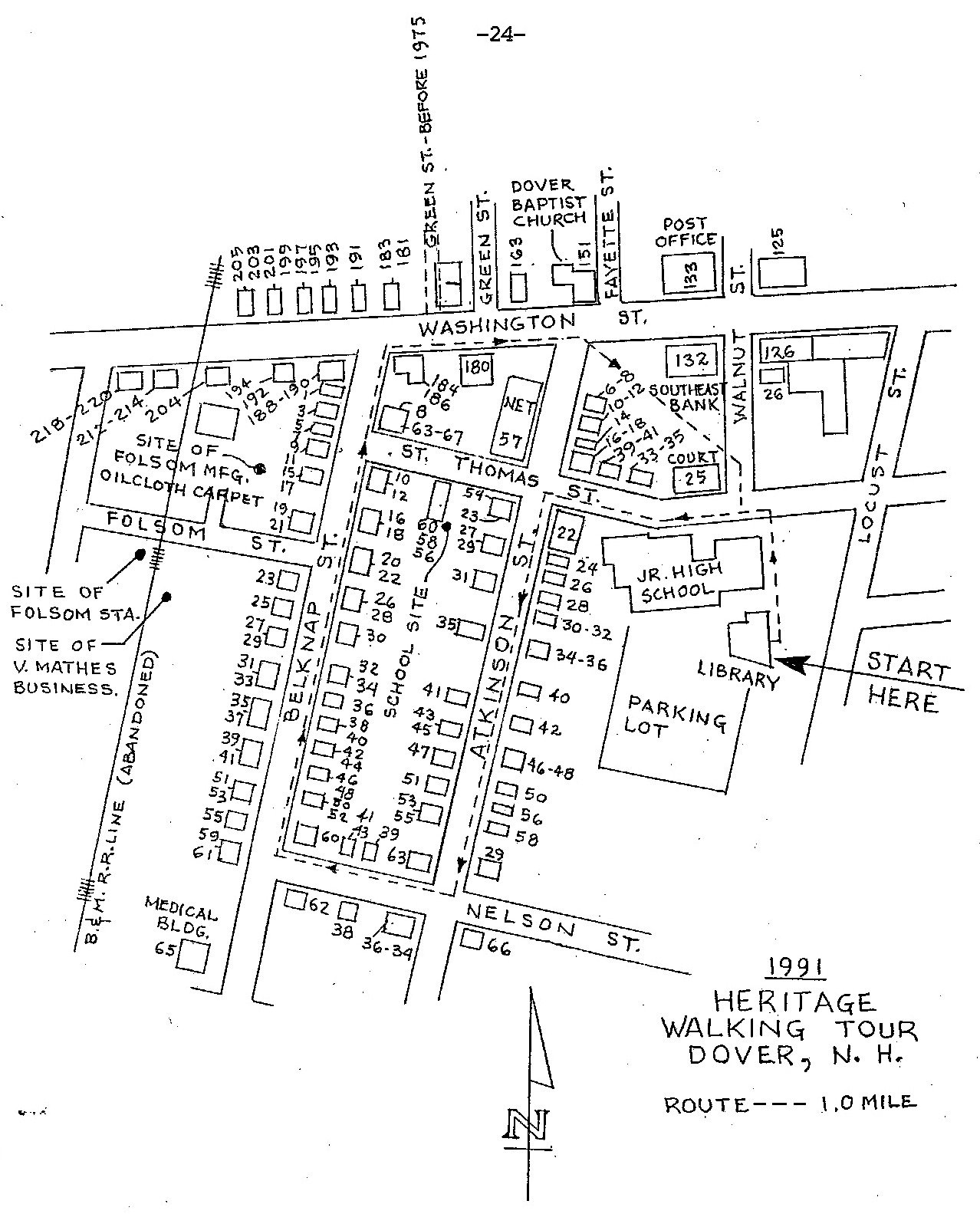
This historical essay is provided free to all readers as an educational service. It may not be reproduced on any website, list, bulletin board, or in print without the permission of the Dover Public Library. Links to the Dover Public Library homepage or a specific article's URL are permissible.


